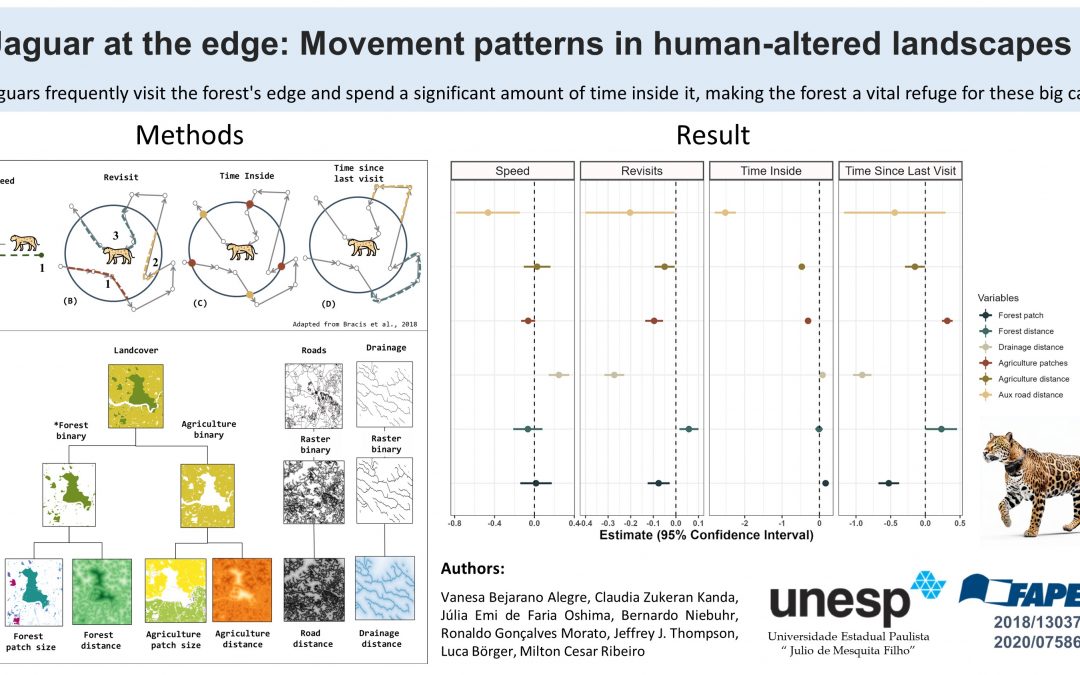Our recent study explored jaguar movement across fragmented landscapes shaped by human activities such as agriculture and road construction. We analyzed GPS data from 54 individuals across South America to understand their movements through forest patches, agricultural areas, natural drainages, and road edges. Our findings provide new insights into the challenges and adaptations of this apex predator in altered habitats.
Key findings
- The essential role of forest patches
- We observed that jaguars spend more time in larger forest patches, which provide abundant resources and safe shelter.
- Smaller patches and forest edges were frequently revisited, likely due to the presence of prey such as rodents and ungulates.
- Larger patches significantly reduced the time between revisits, highlighting their importance as key habitats.
- Agriculture as a barrier
- Jaguars avoid large agricultural patches, as we observed fewer revisits and less time spent in these areas.
- However, agricultural edges attract jaguars, possibly due to opportunistic prey feeding on crops.
- Distance to agricultural areas affected revisit frequency, confirming that agriculture influences their movement.
- Impact of drainages and roads
- Jaguars moved more slowly near natural drainages, emphasizing their importance as water sources and habitats for prey such as capybaras and caimans.
- Conversely, jaguars move faster near roads, which poses risks due to potential collisions and habitat fragmentation.
Conservation Implications
Our results highlight the importance of preserving large, continuous forest patches to ensure the survival of jaguars. We suggest implementing buffer zones around natural habitats and creating biological corridors to enhance habitat connectivity and reduce human-jaguar conflicts. Additionally, addressing risks posed by roads and the ecological dynamics at the edges of agricultural and forested areas is crucial.
Conclusion
With this study, we have contributed to a better understanding of how jaguars respond to fragmented landscapes. Protecting their habitats helps this iconic species and preserves the ecosystems they depend on. We will continue exploring strategies to promote coexistence between jaguars and human communities in shared landscapes.
For more details about our work, you can access the full article here. You can also always contact me if you have any comments.

